Dog Got Ahold of Baby Chick Will It Survive
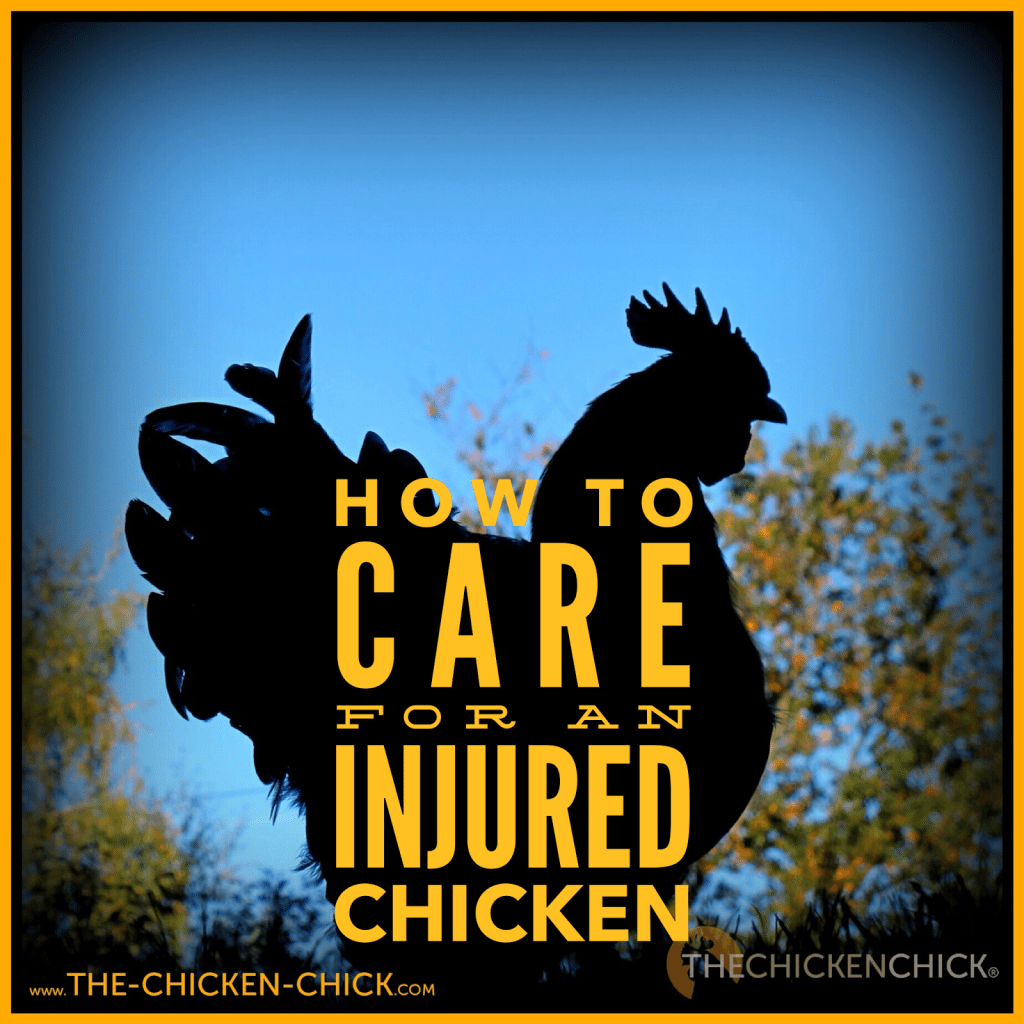
Chiliadost backyard chicken keepers have no access to a veterinary willing or able to care for an injured chicken, so when a pet chicken is injure, self-aid is the only recourse. Some of the post-obit basic starting time aid care measures for injured chickens may be life-saving when a vet visit is not an choice.

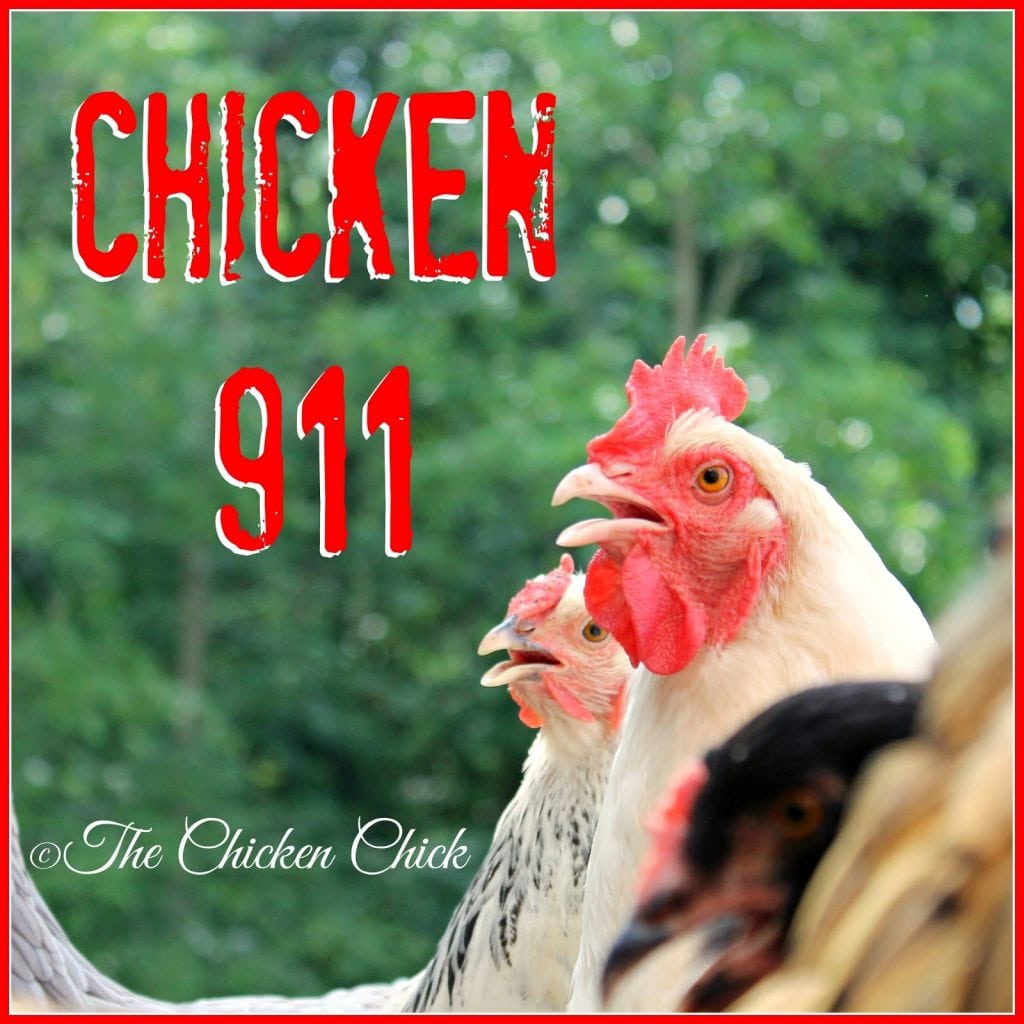
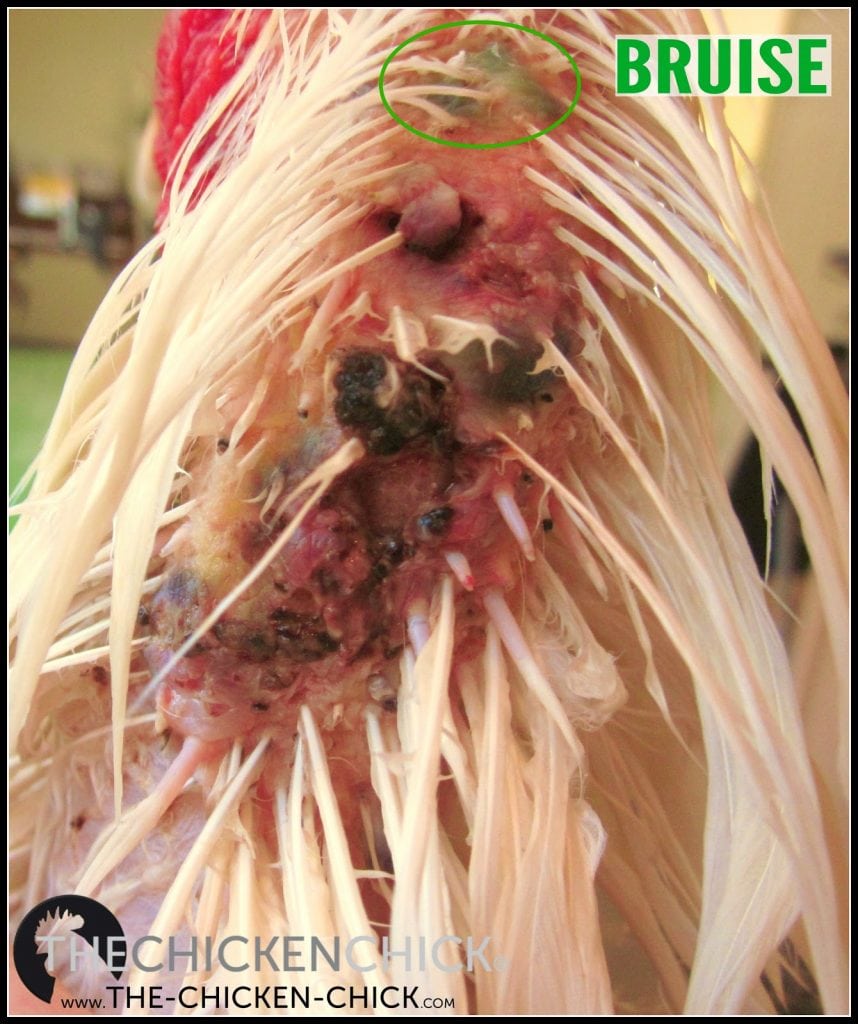
The types of injuries that about usually occur in backyard flocks are those from chickens fighting with one another, picking each other and attacks by predators such every bit dogs, raccoons, bobcats and hawks. Keeping calm when discovering an injured chicken is the first priority and when you know what needs to exist done, it's easier to remain equanimous.
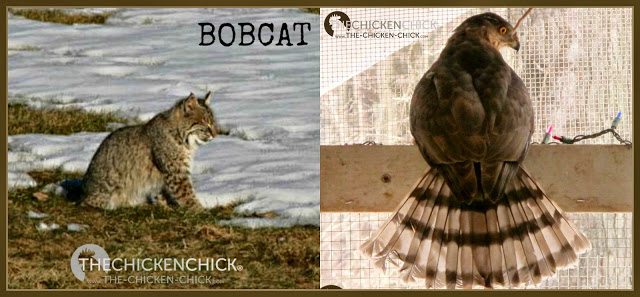
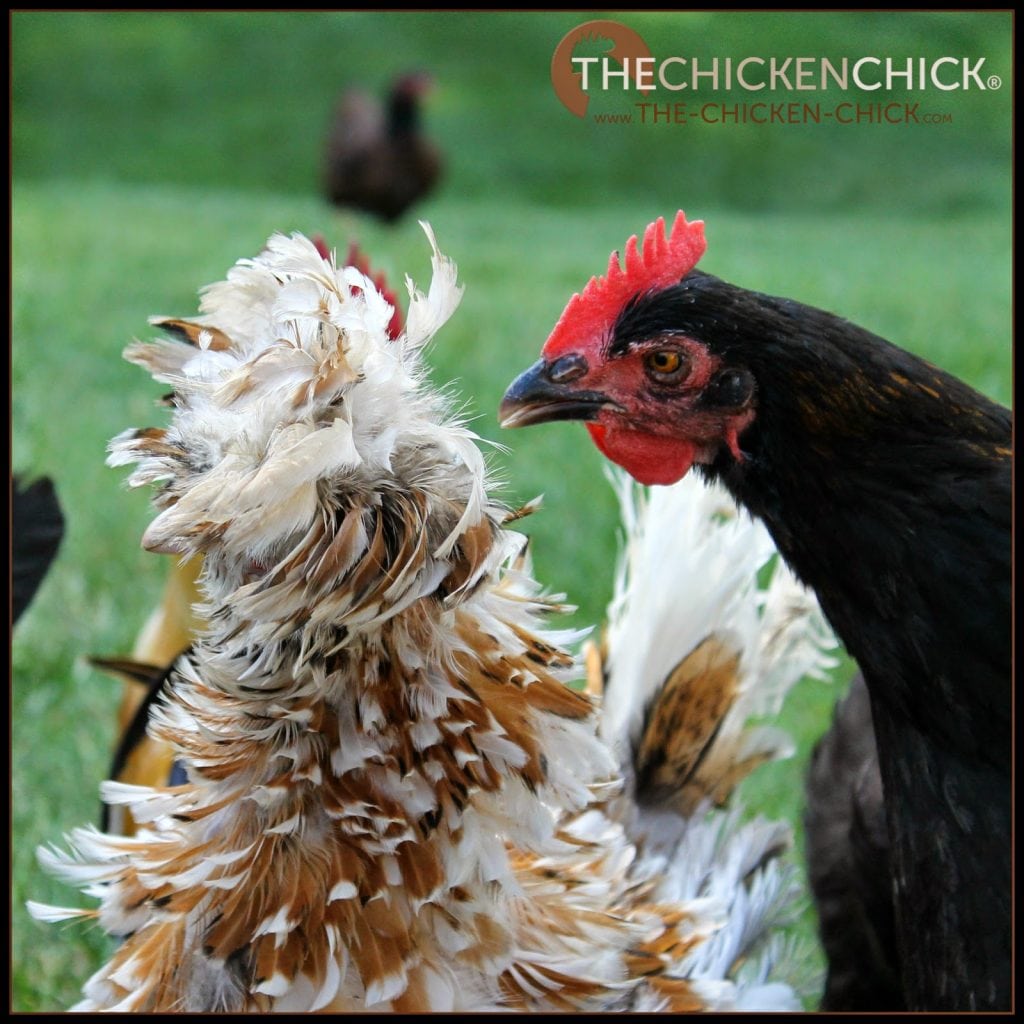
PREPARING FOR CHICKEN INJURIES
ane. First Aid Kit.
Have a well-stocked offset aid kit ready in an hands accessible location. This article detailscraven outset assist kit essentials.
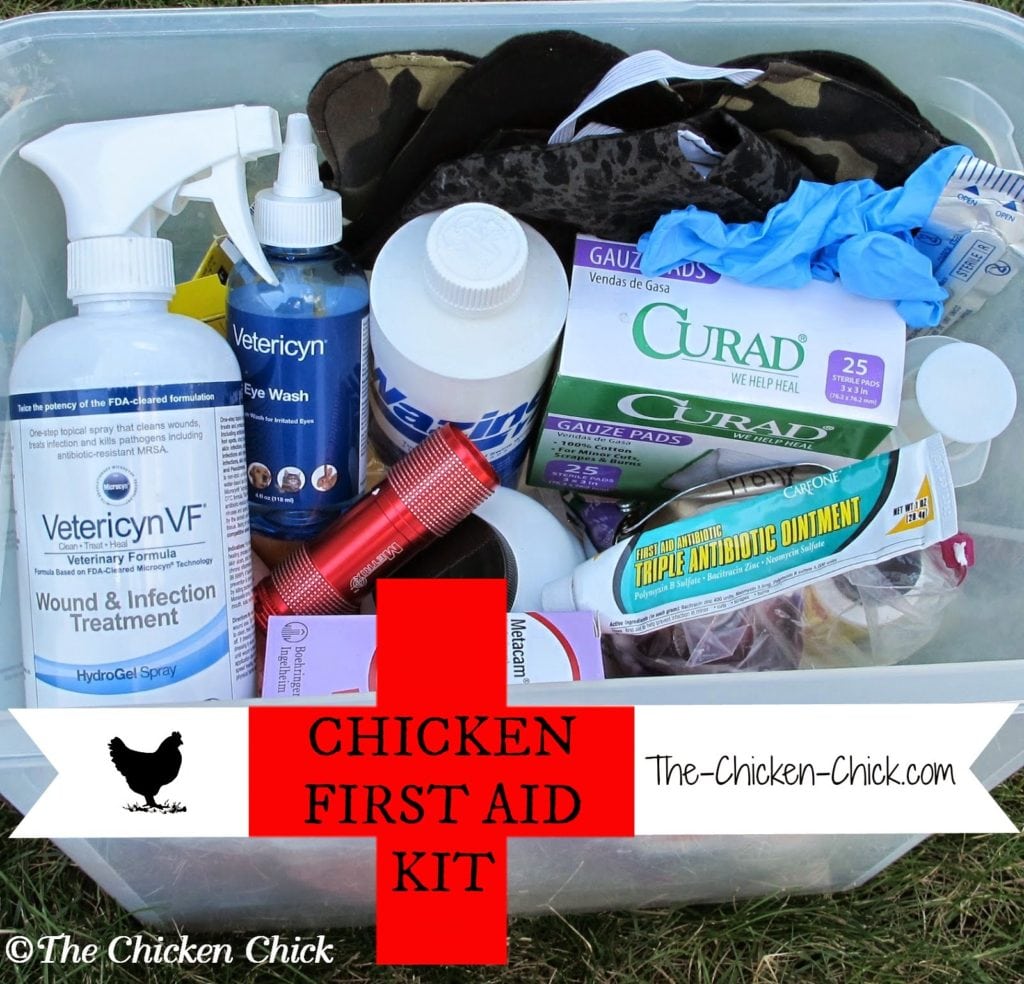
two. Infirmary & Recovery Space.
Have a dedicateddomestic dog crate or pet kennel/carrier with soft litter material. Pine shavings work well, only a soft towel will suffice temporarily. The chicken infirmary area should be a quiet space away from the coop, inside the house, garage or basement where the craven will remain until fully recovered. It should be conveniently located for frequent observation. I highly recommend using a dog kennel cage considering they are spacious, easy to make clean and muzzle cups for food and poultry nipple drinkers to keep the litter, food and water make clean and dry out.
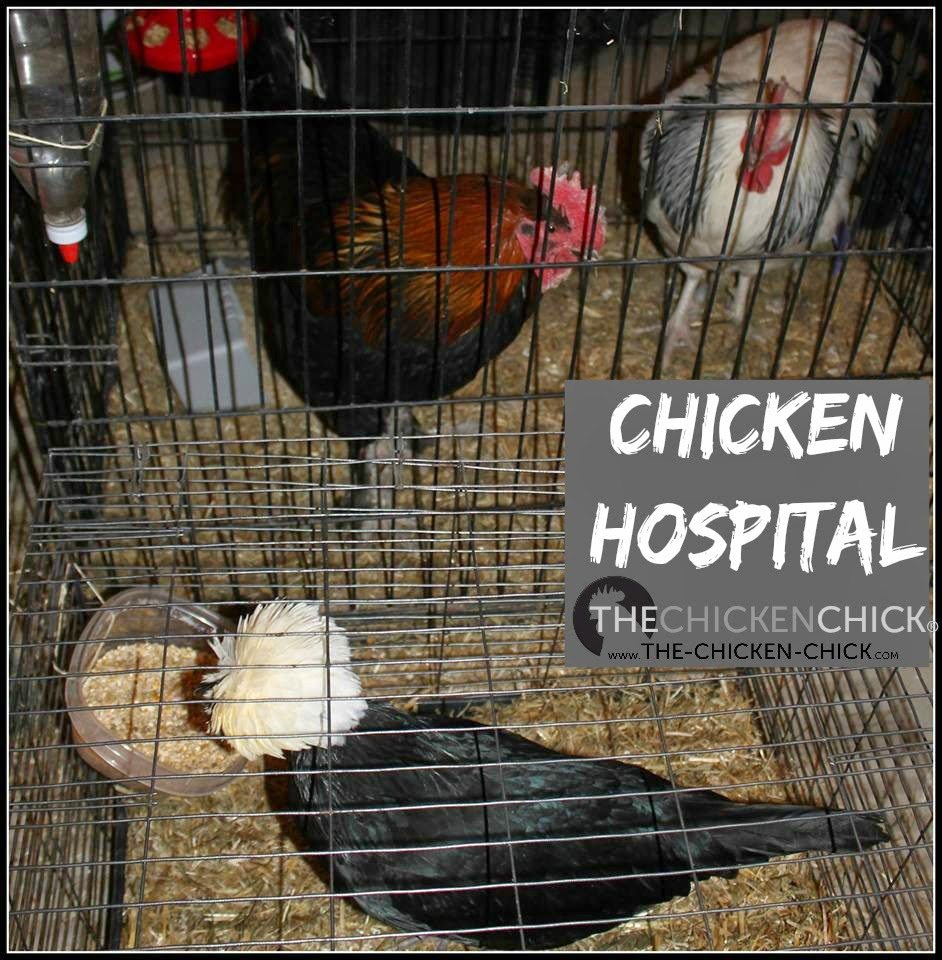
iii. Have A EUTHANASIA PLAN
With a astringent injury the worst instance scenario of is e'er death and sometimes the kindest thing we can practice for a craven is to end their suffering humanely. Many vets, even those that practice non treat chickens, volition concur to euthanize a sick or dying bird. Detect out who those vets are in advance of needing them.
Euthanasia by Cervical Dislocation
In my experience, the fastest, least gruesome and most humane method of euthanasia is cervical dislocation or "breaking" the craven's neck, which causes instant unconsciousness and expiry. While property the chicken nether non-dominant arm like a football game, press its body very securely against your side. Place your dominant paw on meridian of the bird'southward head with with your pollex at the base of the skull behind the head, fingers wrapping underneath the throat. With a very house grip, quickly and firmly stretch and pull the head straight forward, abroad from the body while bending the neck up towards its dorsum until a popping audio is heard, which signals the separation of the vertebrae and instant expiry. Continue to agree the bird securely until nerve activity has stopped.

CARING FOR AN INJURED CHICKEN
1. ISOLATE
Immediately motility an injured chicken to safety abroad from the flock to avoid further injury by other chickens. Wrapping the craven loosely in a big towel can assistance keep it calm during send from the injury scene to rubber.
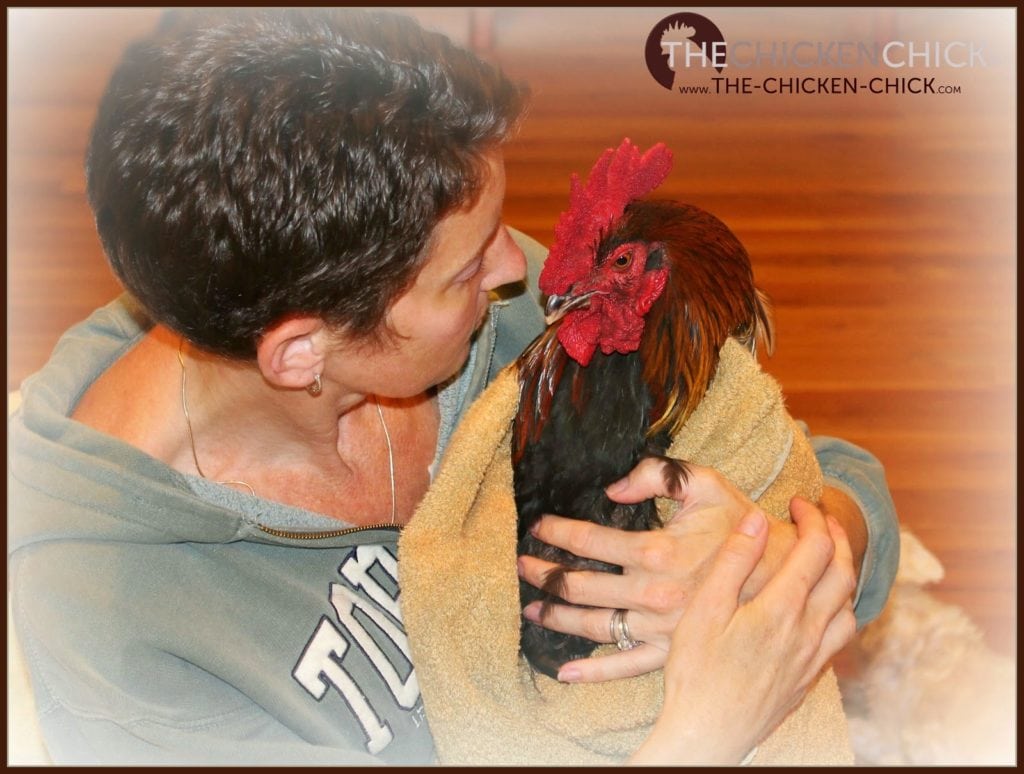
two. STOP Whatsoever BLEEDING
Using a clean towel, gauze or paper towel, employ gentle, but house force per unit area to an actively bleeding injury until it stops. Wearing vinyl gloves is a good idea when treating wounds. Claret stop powder can be applied to superficial wounds after active bleeding has been controlled. Bleeding wounds often look much worse than they actually are before they are controlled and cleaned up.
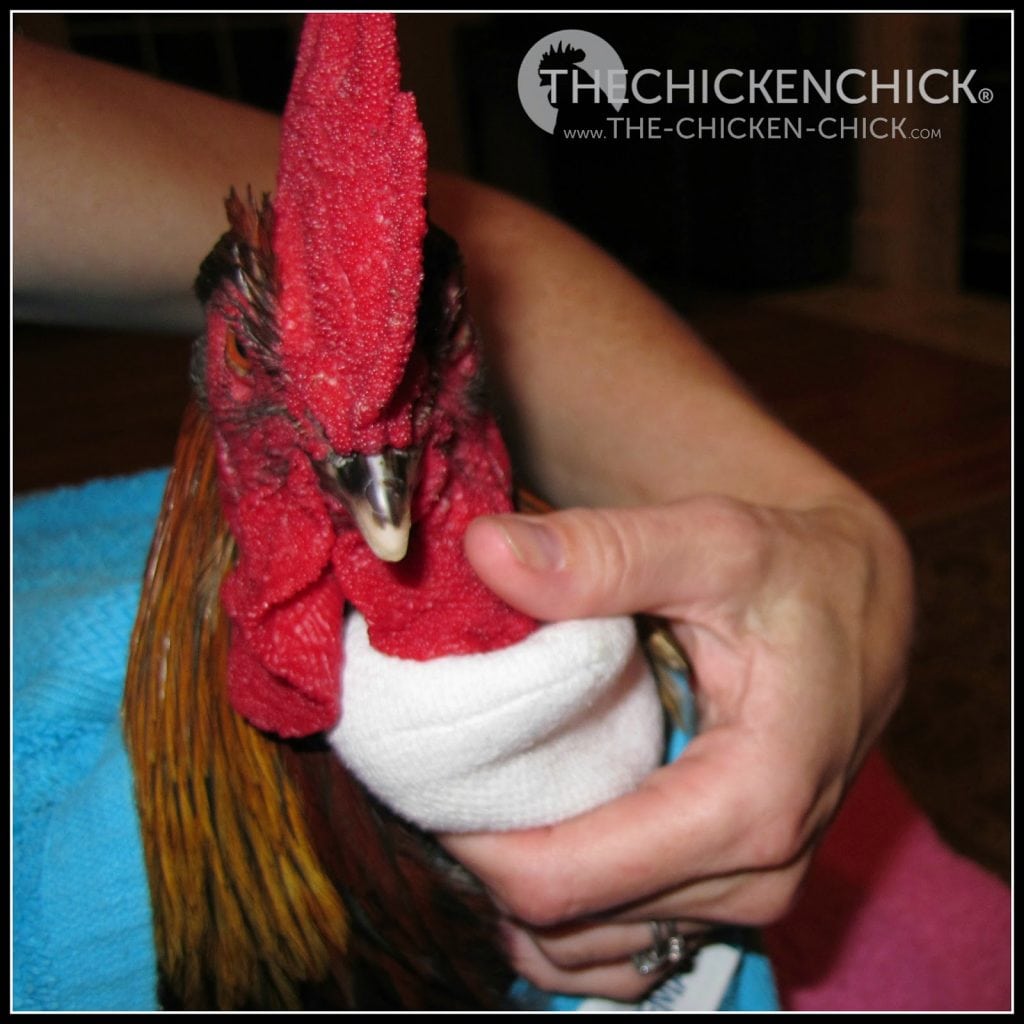
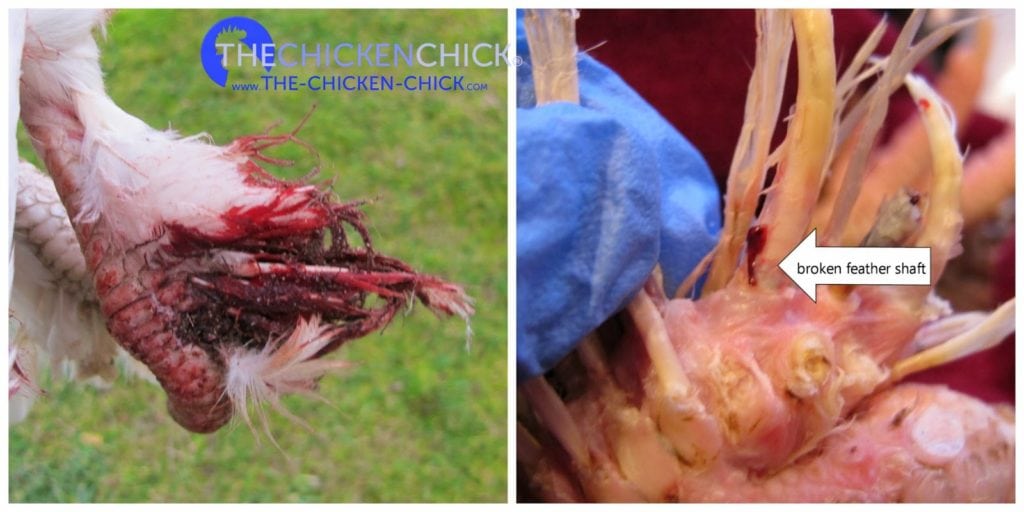
three.Appraise & CLEAN THE INJURIES
Examine the chicken from head to toe. Feathers may conceal wounds and bathing the bird makes finding them easier, particularly with puncture wounds from a hawk's talons, for instance. If necessary, trim or pluck feathers in the vicinity of a wound to prevent interference with healing. Be very careful none of the feathers are newly emerging pivot feathers, however. Learn more than about pivot feathers here.
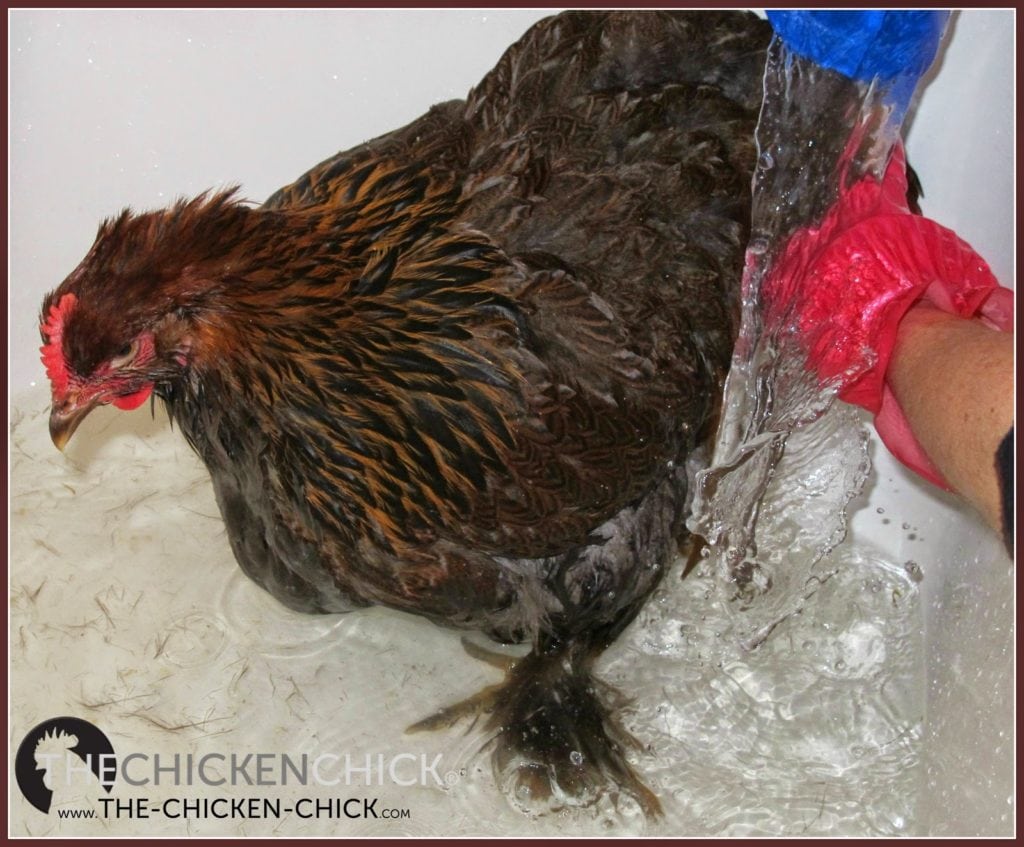
All wounds should be thoroughly cleaned. Water with betadine, chlorhexadine 2% solution spray, orVetericyn Wound Care Spray can all be used for cleaning wounds.
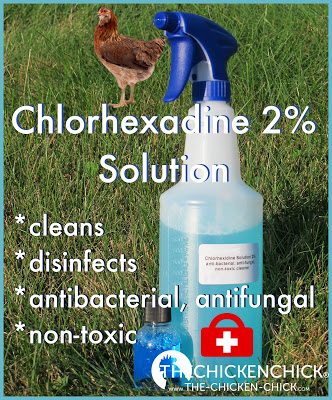
For very deep or very dirty wounds, either chlorhexadine 2% solution sprayor freshly mixed Dakin's solution can be squirted into information technology with asyringe to debride and gargle. Dakin'southward solution is made past adding one tablespoon of bleach plus 1 teaspoon of blistering soda to one gallon of water. It should be freshly mixed daily.
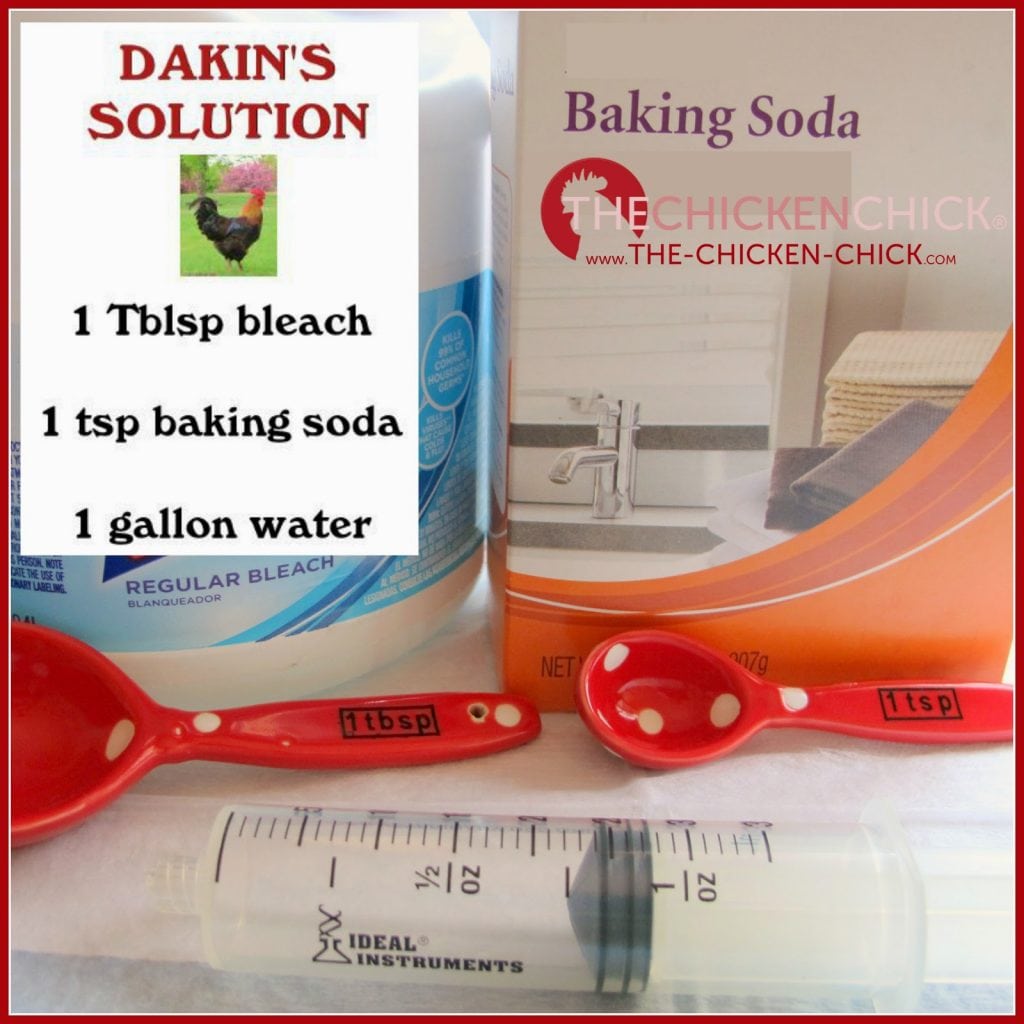
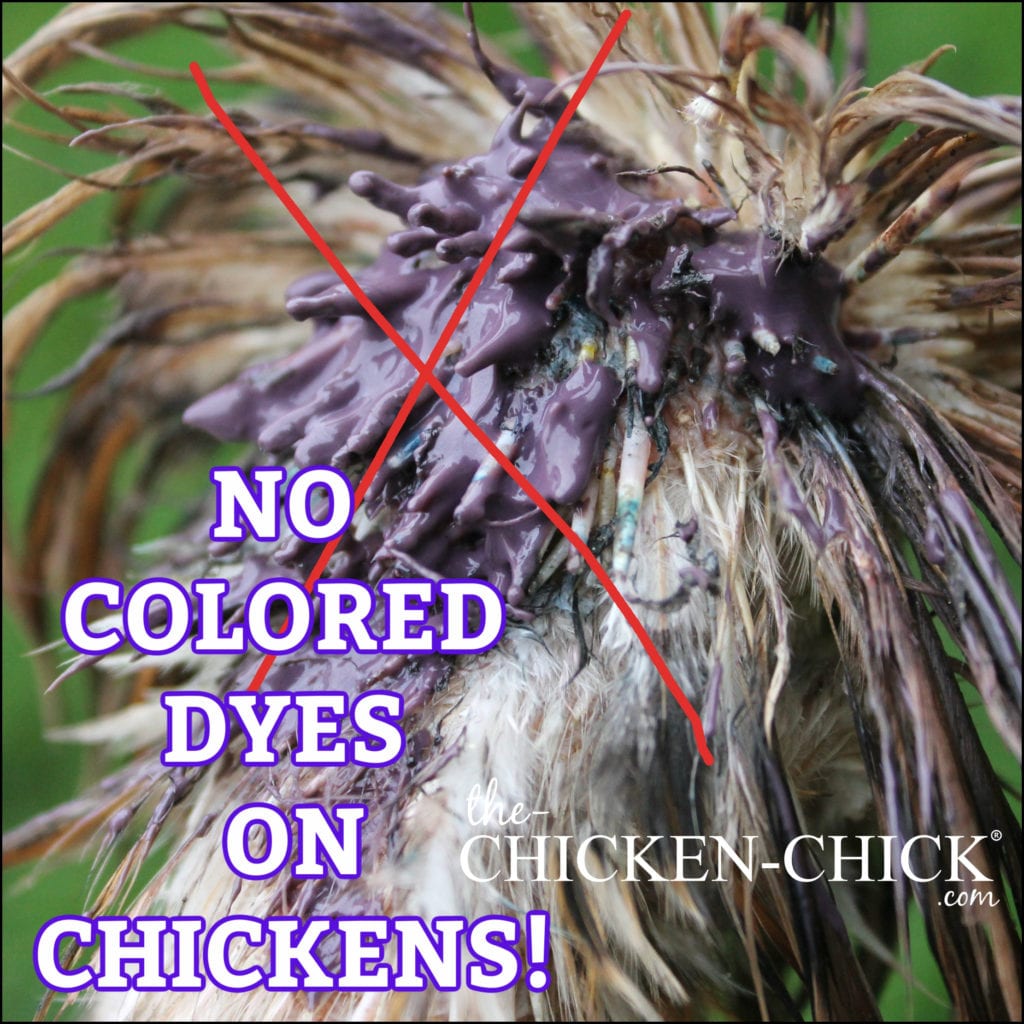
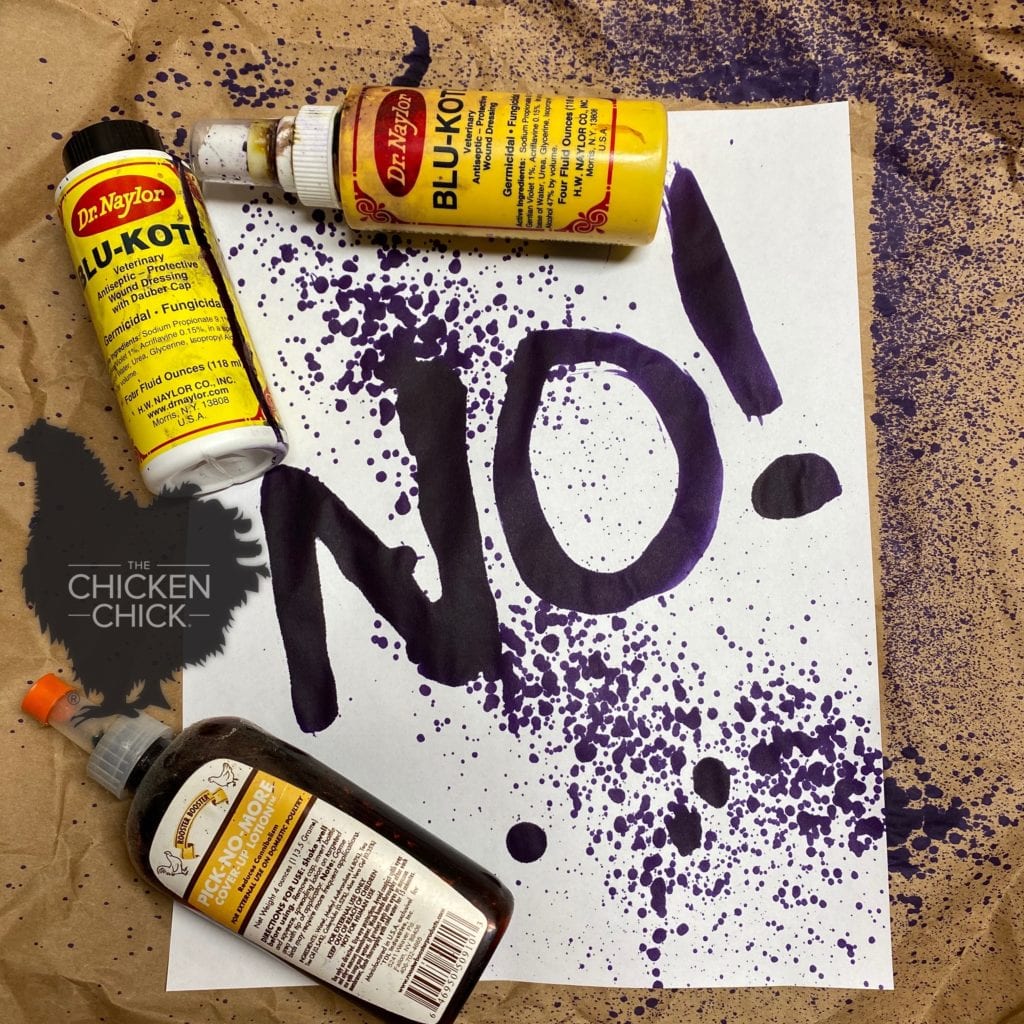
I do not recommend using alcohol-based antiseptic liquids with bluish, purple, or red dyes for a few reasons. First, an alcohol-based product on a wound stings like fire. Contrary to pop belief, dying a chicken's peel and feathers does non disguise an injury or protect the injured bird from being cannibalized by flockmates. Chickens have outstanding colour vision; if anything, the dye draws attending to the brightly colored wound. Injured chickens should always be isolated until fully healed, not colored like an Easter egg and left in the flock with fingers crossed, hoping for the best. Finally, color staining ingredients impede the ability to detect 1 of the commencement signs of infection: redness. There are kinder, more effective wound care products labeled for use on food-producing animals such as Vetericyn Plus, which is the wound intendance product I use on my flock.
four. ELECTROLYTES
Adding avitamin/electrolyte supplement into the drinking water for a day or two can assistance with any shock from the injury. Never give chickens electrolytes for more 3 days as it can result in the reverse of the intended effect.
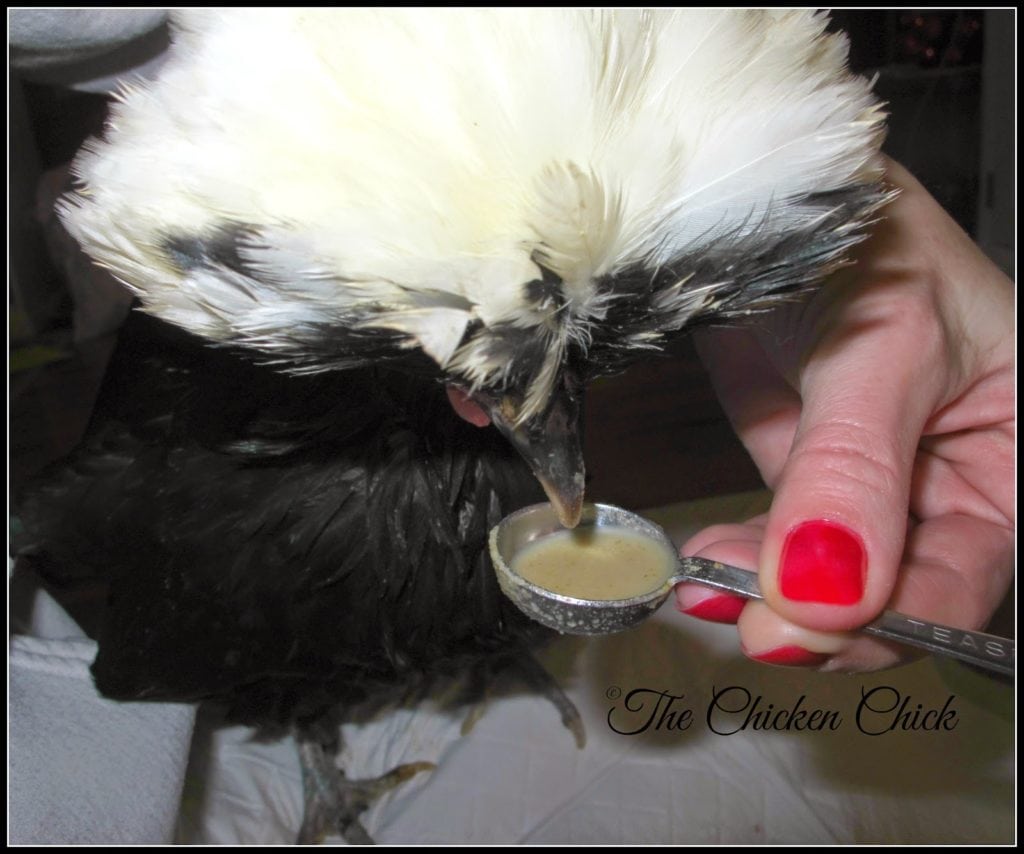
5. FOOD & WATER
Keep the injured chicken hydrated throughout the crisis fifty-fifty if that means offering water by spoon or dropper frequently.Water is involved in every aspect of a chicken's metabolism from regulating body temperature todigesting food, and eliminating body wastes and a dehydrated bird will have difficulty recovering.
Food is much less critical than water initially for an injured bird, only if the craven is not eating independently in a day or so after the injury, they can be fed past spoon,dropper, syringe or tube fed a liquid nutrition.
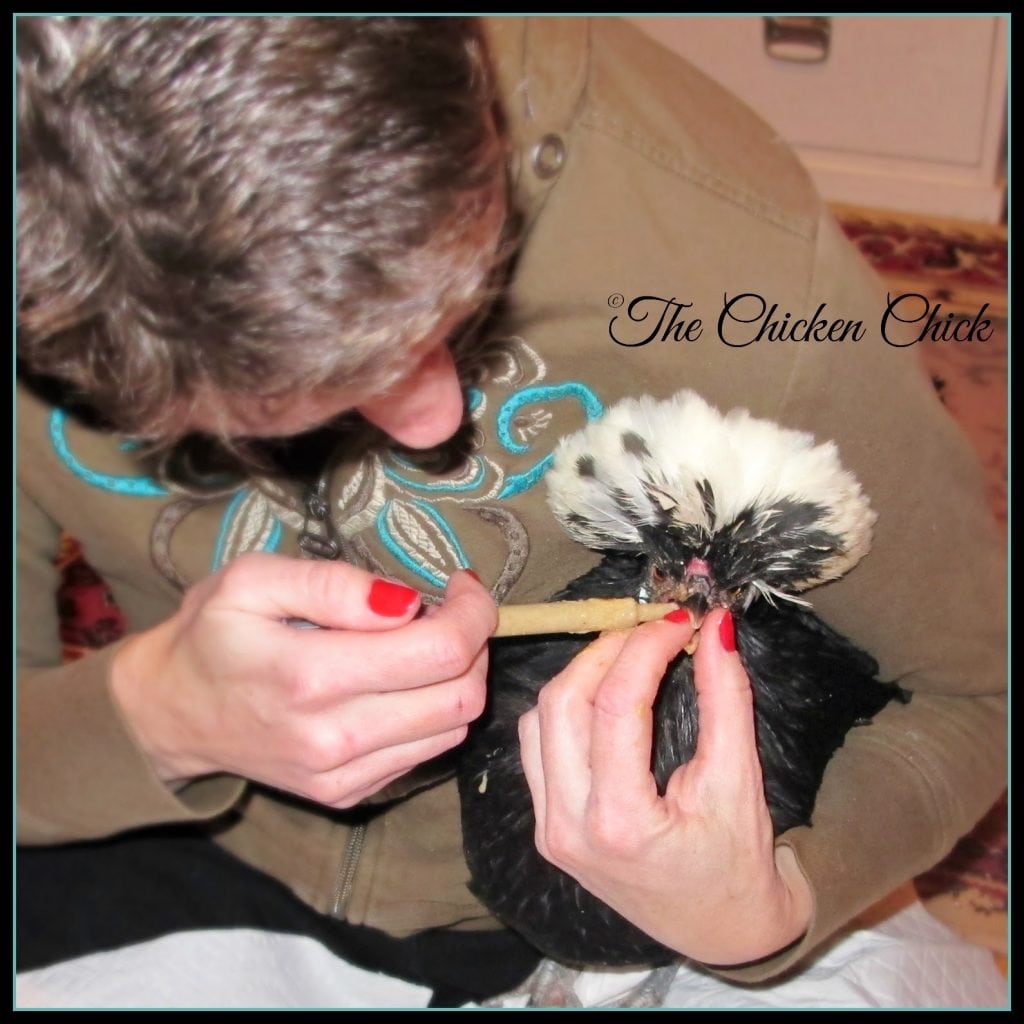
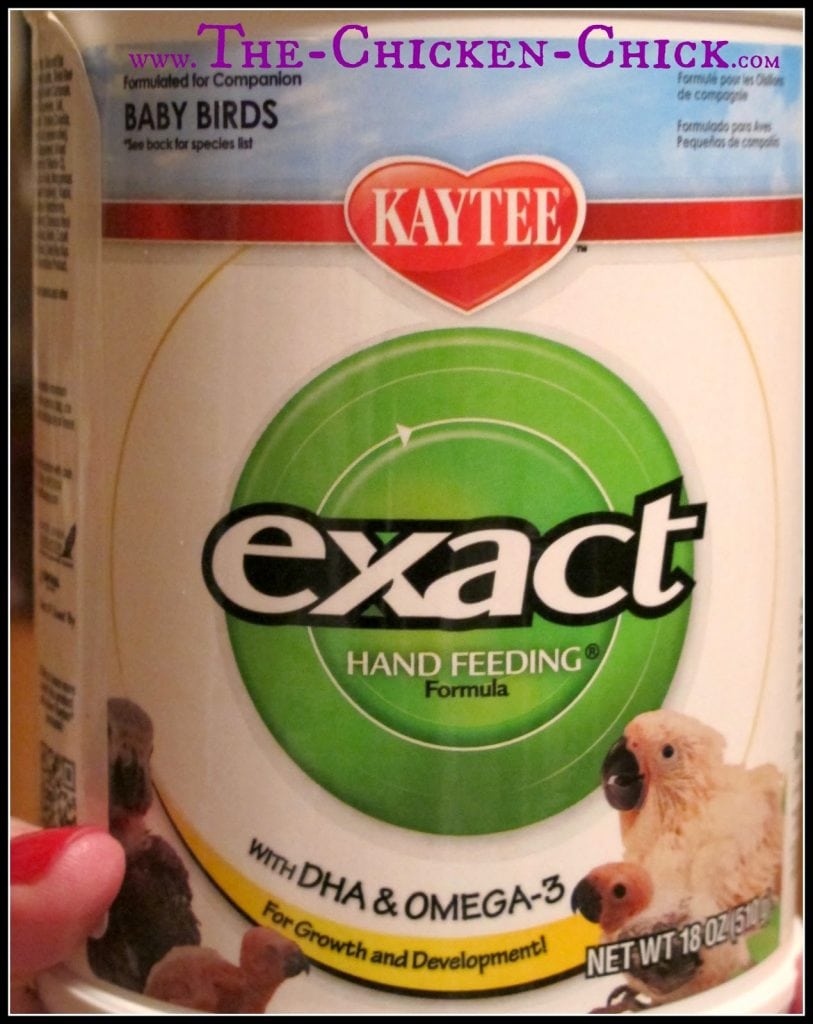
6. PAIN Command
Their unfortunate position near the bottom of nature's food concatenation requires that chickens deport stoically when sick or injured so equally not to describe unwanted attention. Chickens exercise not offering facial expressions that would suggest pain or discomfort, simply practice not mistake their stoicism for a lack of pain- chickens do feel pain. Every bit long as there are no internal injuries, an aspirin drinking water solution tin be offered to an injured chicken for a maximum of iii days at the ratio of 5 aspirin tablets (total of 325 mg) to i gallon of h2o. Meloxicam i.five mg/ml oral solution is a oft-prescribed anti-inflammatory for chickens, but a veterinarian must prescribe it along with the dosage by weight and any egg withdrawal period.
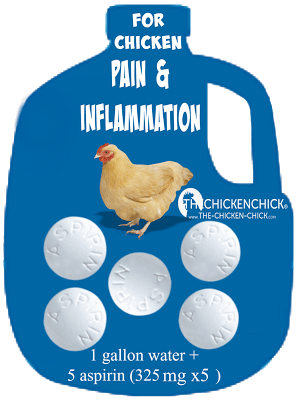
vii. INFECTION Command
Go along the wound clean and dry while the bird recovers. I recommend using Vetericyn Wound & Infection care spray 3 times a day until the bird has healed. Watch for signs of infection such as swelling and redness in the expanse. If antibiotics are necessary, contact your vet or state Agronomical Extension Service's poultry agent (listHere).
viii. INTERNAL INJURIES
If an injured chicken does not respond to treatment or declines in status, suspect infection and/or internal injuries. Only a veterinarian can help if a bird needs handling for internal injuries.
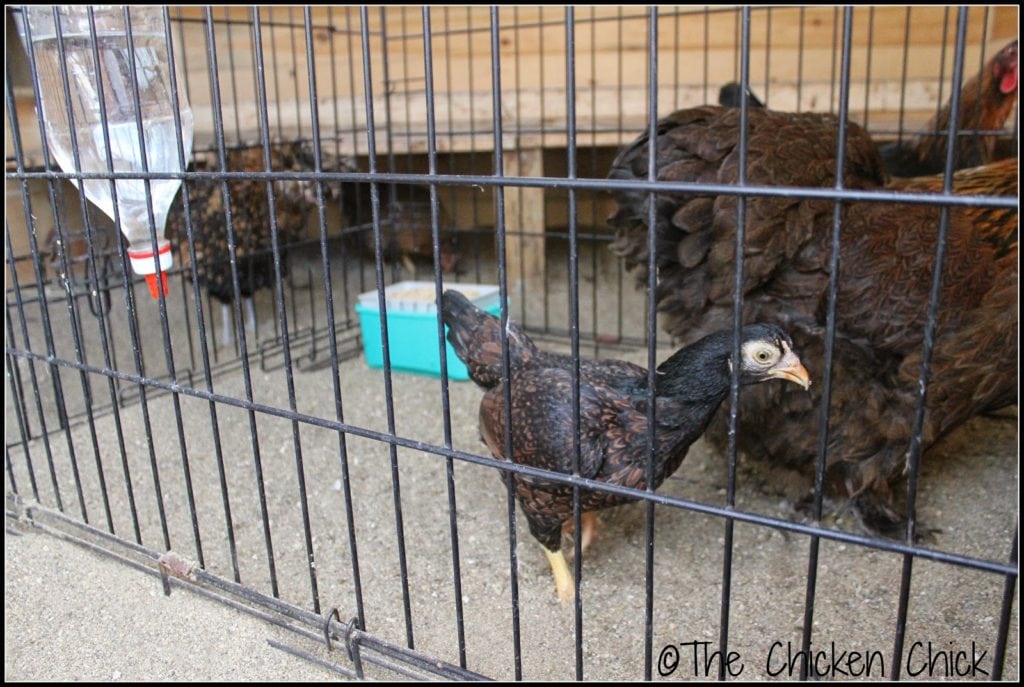
RETURNING AN INJURED BIRD TO THE FLOCK
An injured chicken should be 100% healed with no visible signs of blood or scabbing before existence returned to the flock. Covering it up with a regal dye product is not an adequate substitute for time and healing. Treat the injured bird similar a stranger when reintroducing it to the flock. I recommend thePlaypen Method for a conflict-gratis reunion. Patience is the cardinal to success. Learn about the Playpen MethodHither.

Resource
Tap into whatever/all of these resources as needed:
- Board certified avian vetsHere
- Your country veterinarian diagnostic laboratory(*MA labHere, NH labHERE)
- Your state veterinarian (listHERE)
- The USDA's Veterinary Services at 1-866-536-7593 (complimentary consultation with a vet by phone)
- Your state Agricultural Extension Service's poultry agent (listHere)

You lot May Also Like
Source: https://the-chicken-chick.com/how-to-care-for-injured-chicken-and/
0 Response to "Dog Got Ahold of Baby Chick Will It Survive"
Post a Comment